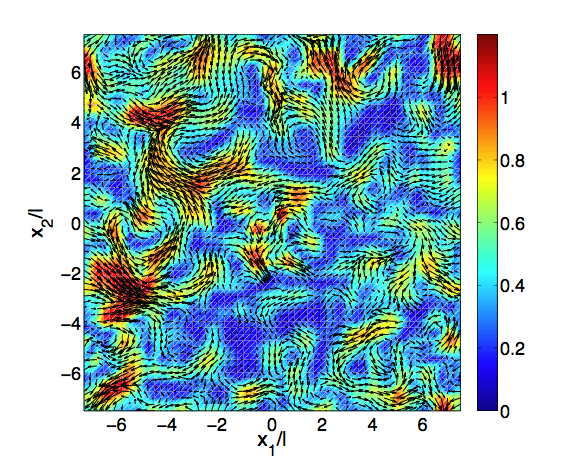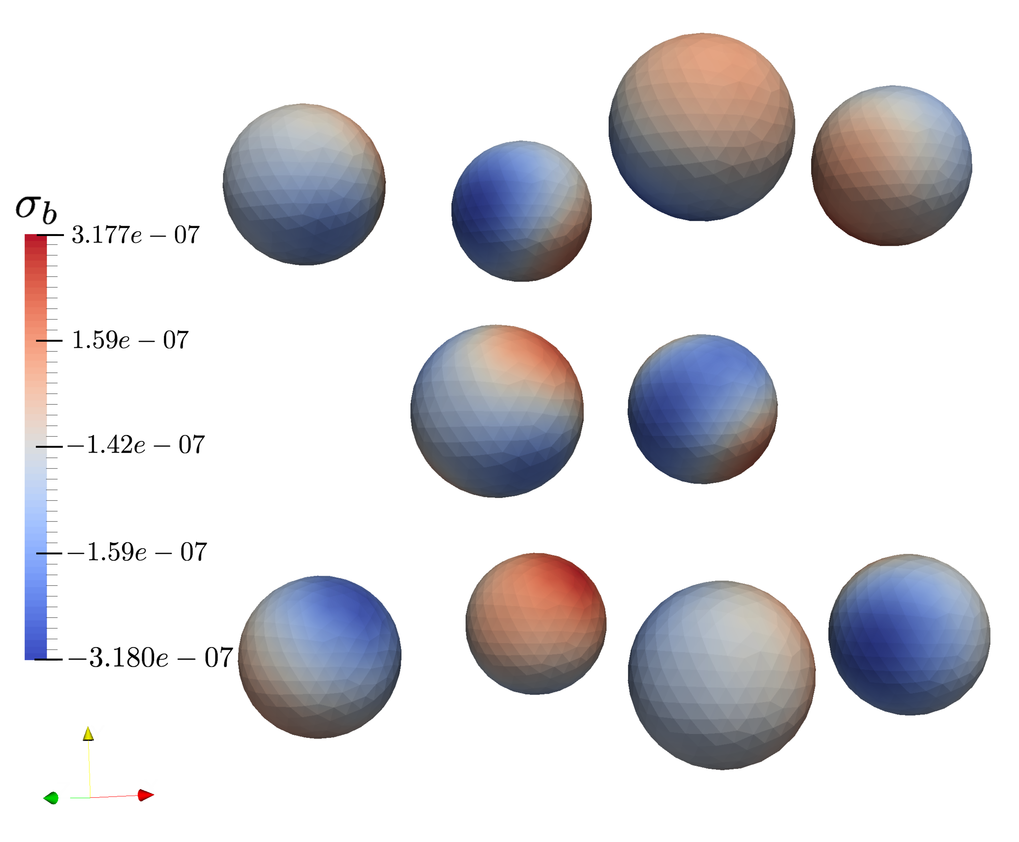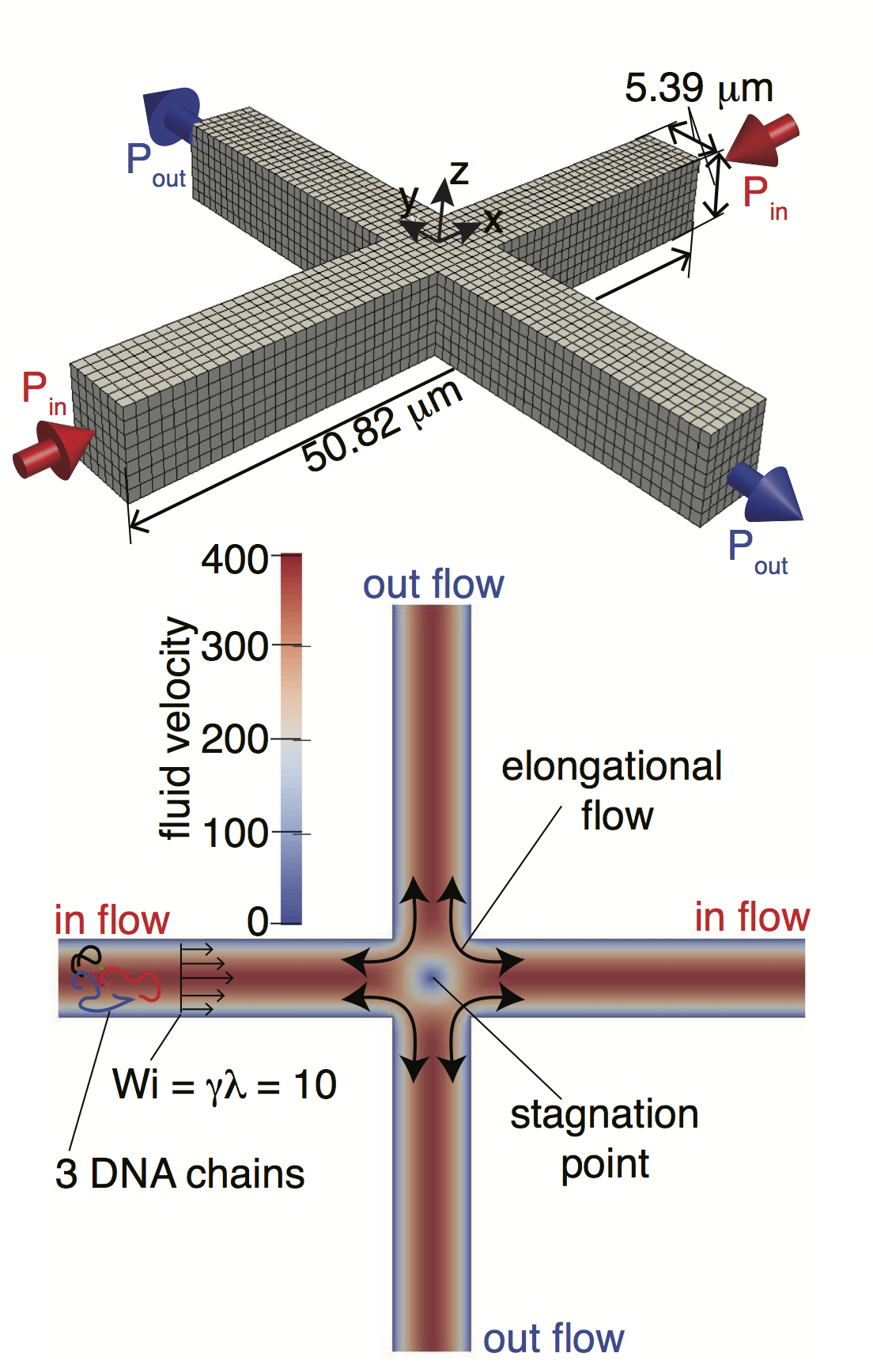COPSS Features
General-geometry Ewald-like Method
The scheme provided by the General geometry Ewald-like
Method (GgEM) is a platform for multi-scale problems in physics
and chemistry. Applied to hydrodynamic equations, the method
solves for the proper behavior (both Brownian and Hydrodynamic)
of discrete entities such as polymers, cells and colloids, in
continuous fluid media. The Navier-Stokes equations are solved
using a Green's function approach for long-range interactions.
At right is a demonstration of GGEM methods applied to the
resolution of flow fields in suspensions of self-motile
particles.
Fast Multipole Boundary-element Method
The Fast Multipole Boundary Element Method (FMBEM) is a
code framework for various integral problems encountered in
scientific and engineering communities. It runs in parallel and
utilizes iterative solver GMRES accelerated by a
kernel-independent Fast Multipole Method (FMM) with O(N)
computational complexity. It applies to electrostatic
polarization problem involving arbitrary-shaped polarizable
dielectric objects embedded in a dielectric continuum, and also
to the calculation of interactions between
ferromagnetic/ferroelectric objects with arbitrary shapes. The
code is being developed using libMesh (finite-element library)
and ScalFMM (FMM library). At right is a demonstration of the
FMBEM applied to the electrostatic polarization problem among
interacting polarizable particles.
Parallel Finite-Element General-Geometry Ewald-like Method (pFE-GgEm)
Parallel finite element general geometry Ewald-like method (pFE-GgEm) is an efficient O(N) and
fully scalable computation framework to model the dynamics of Brownian particles considering
long-range hydrodynamic interactions (HI) in any geometries. The framework combines a FEM Stokes’
solver with GgEm, a mid-point integration scheme, and a Chebyshev polynomial approximation based
on the fluctuation-dissipation theorem. It is built on open-source scientific packages, such as
LIBMESH (framework of solving PDEs), PETSC (parallel linear, non-linear equation solver) and SLEPC (eigenvalue calculations).
At right is a demonstration of the pFE-GgEm applied to study the behaviors of DNA chains under
an elongational flow within a cross-channel geometry.






